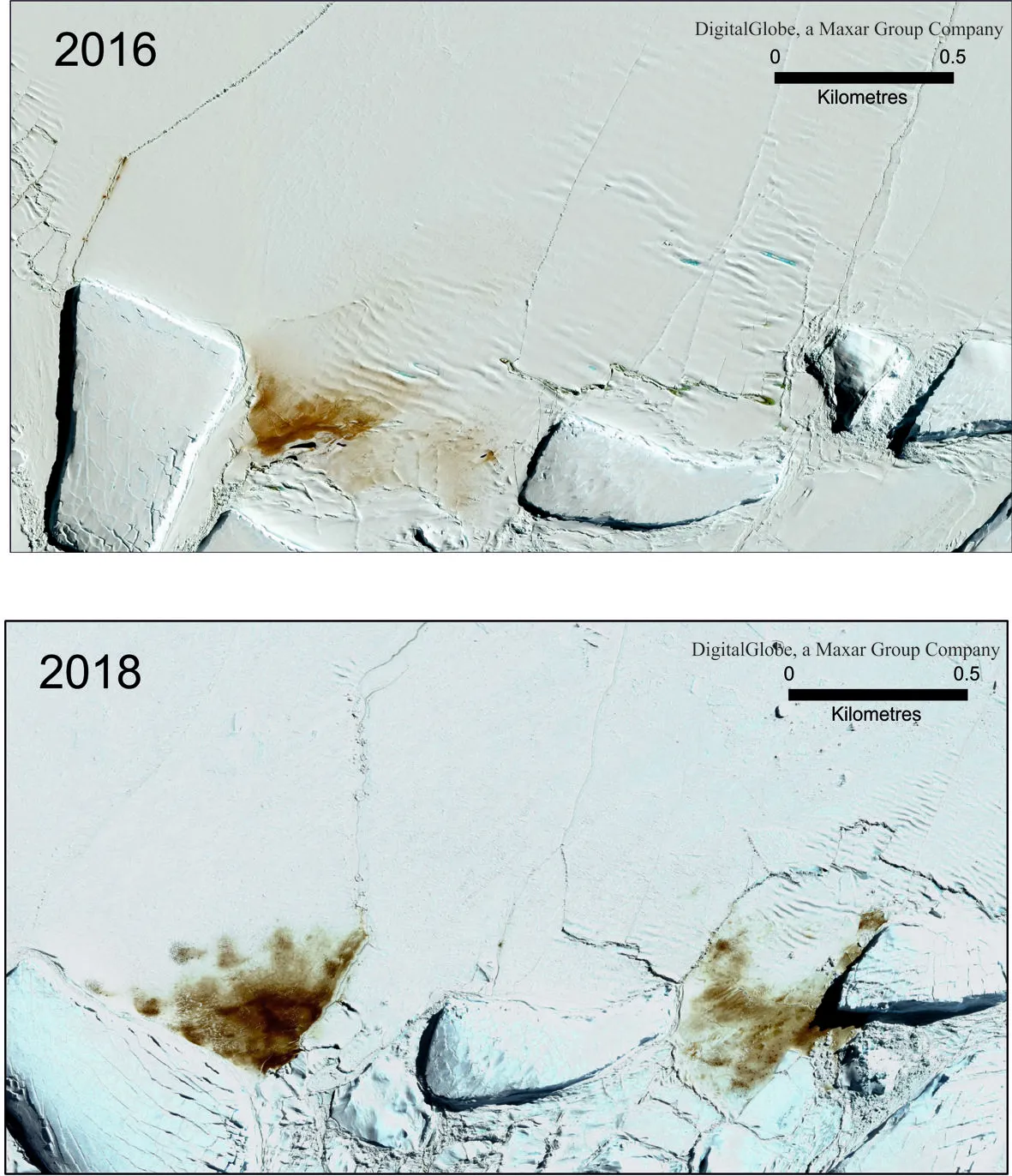Researchers at the British Antarctic Survey (BAS) have used high resolution satellite imagery to reveal the decrease in overall population and the failure of the colony to breed.
Until recently, the Halley Bay colony was the second largest in the world, with the number of breeding pairs varying each year between 14,000 to 25,000 which is around five to nine per cent of the global emperor penguin population.
“Our specialised satellite image analysis can detect individuals and penguin huddles, so we can estimate the population based on the known density of the groups,” says lead author and BAS remote sensing specialist Dr Peter Fretwell.
“These images have clearly shown the catastrophic breeding failure at this site over the last three years.”

The failure of the colony to breed for the previous three years is believed to be associated with changes in the local sea-ice conditions.
Emperor penguins need stable sea-ice on which to breed, and this icy platform must last from April when the birds arrive, until December when their chicks fledge.
For the last 60 years the sea-ice conditions at the site have been stable but in 2016, after a period of abnormally stormy weather, the sea-ice broke up in October, well before any emperor chicks fledged.
The again was the case in 2017 and 2018 and resulted in the deaths of almost all of the chicks each season.

“Published models suggest that emperor penguins numbers are set to fall dramatically,” adds co-author and penguin specialist Dr Phil Trathan.
“We could lose 50 - 70 per cent of their numbers before the end of this century as sea-ice conditions change as a result of climate change.”
The colony at Halley Bay has now shrunk to a fraction of its former size, whereas nearby Dawson Lambton colony has largely increased.

This indicates that many of the adult emperors have relocated to seek better breeding grounds with the changing environmental conditions.
The re-location of many of the birds to a more stable breeding ground is encouraging, as until now it was not known whether the penguins would seek alternative sites in response to significant changes in their local environment.
Read the full paper in the journal Antarctic Science.
Main image: Emperor penguins on the sea ice close to Halley Research Station. © Christopher Walton
